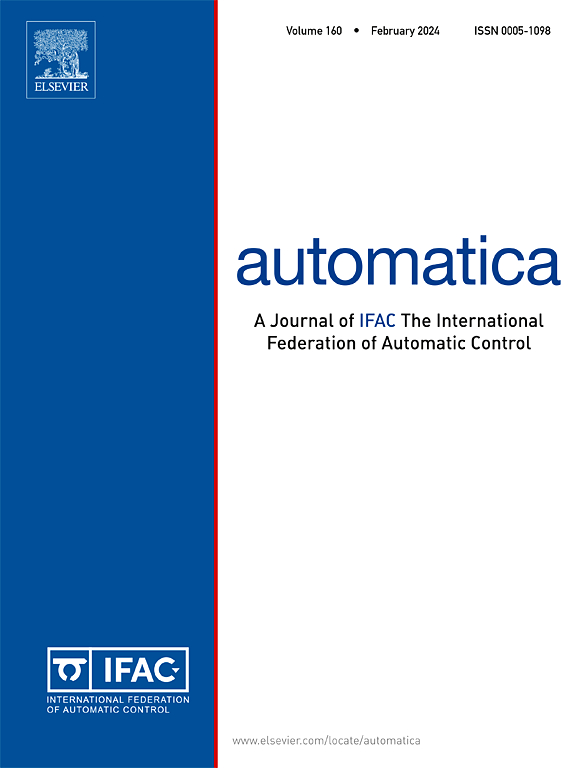镜像下降法的收敛率边界:IQCs、波波夫准则和布雷格曼发散
IF 4.8
2区 计算机科学
Q1 AUTOMATION & CONTROL SYSTEMS
引用次数: 0
摘要
镜像下降法(MD)是一种广泛应用于凸优化的算法,本文对该算法进行了全面的收敛性分析。该算法的主要特点是通过使用广义的类距离函数,对基于梯度的经典方法进行了广义化,而广义的类距离函数是使用布雷格曼发散来制定的。由于所涉及的复合非线性缺乏单调性,因此为该算法建立收敛率边界通常是一个非难解决的问题。在本文中,我们证明了通常用作该算法 Lyapunov 函数的最优解的 Bregman 发散是 Lyapunov 函数的一个特例,当 Popov 准则应用于 MD 动力学的适当重构时,Lyapunov 函数会随之产生。我们以此为基础,构建了一个积分二次约束(IQC)框架,通过该框架可以推导出具有较低保守性的收敛速率边界。我们还通过实例说明,推导出的收敛率边界可以很窄。本文章由计算机程序翻译,如有差异,请以英文原文为准。
Convergence rate bounds for the mirror descent method: IQCs, Popov criterion and Bregman divergence
This paper presents a comprehensive convergence analysis for the mirror descent (MD) method, a widely used algorithm in convex optimization. The key feature of this algorithm is that it provides a generalization of classical gradient-based methods via the use of generalized distance-like functions, which are formulated using the Bregman divergence. Establishing convergence rate bounds for this algorithm is in general a non-trivial problem due to the lack of monotonicity properties in the composite nonlinearities involved. In this paper, we show that the Bregman divergence from the optimal solution, which is commonly used as a Lyapunov function for this algorithm, is a special case of Lyapunov functions that follow when the Popov criterion is applied to an appropriate reformulation of the MD dynamics. This is then used as a basis to construct an integral quadratic constraint (IQC) framework through which convergence rate bounds with reduced conservatism can be deduced. We also illustrate via examples that the convergence rate bounds derived can be tight.
求助全文
通过发布文献求助,成功后即可免费获取论文全文。
去求助
来源期刊

Automatica
工程技术-工程:电子与电气
CiteScore
10.70
自引率
7.80%
发文量
617
审稿时长
5 months
期刊介绍:
Automatica is a leading archival publication in the field of systems and control. The field encompasses today a broad set of areas and topics, and is thriving not only within itself but also in terms of its impact on other fields, such as communications, computers, biology, energy and economics. Since its inception in 1963, Automatica has kept abreast with the evolution of the field over the years, and has emerged as a leading publication driving the trends in the field.
After being founded in 1963, Automatica became a journal of the International Federation of Automatic Control (IFAC) in 1969. It features a characteristic blend of theoretical and applied papers of archival, lasting value, reporting cutting edge research results by authors across the globe. It features articles in distinct categories, including regular, brief and survey papers, technical communiqués, correspondence items, as well as reviews on published books of interest to the readership. It occasionally publishes special issues on emerging new topics or established mature topics of interest to a broad audience.
Automatica solicits original high-quality contributions in all the categories listed above, and in all areas of systems and control interpreted in a broad sense and evolving constantly. They may be submitted directly to a subject editor or to the Editor-in-Chief if not sure about the subject area. Editorial procedures in place assure careful, fair, and prompt handling of all submitted articles. Accepted papers appear in the journal in the shortest time feasible given production time constraints.
 求助内容:
求助内容: 应助结果提醒方式:
应助结果提醒方式:


